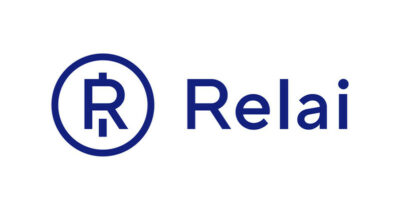
The ORWL Guide on the Communication of Crypto Asset Services
The communication of digital asset services is sensitive: it is crucial for providers to make their services known to the public, but it must also respect a set of rules and good practices. This guide aims to present in a practical and operational way the authorized communication methods, good practices, and risks associated with the promotion of crypto-assets services.
Which Digital Asset Service Providers (DASPs) are autorized to do promotion?
DASPs authorized to promote their services in France or towards the French market must be authorized by the AMF and appear on its whitelist.
There are two levels of authorization giving access to different communication methods:
- Mandatory registration allows the promotion of its services on the French market with the exception of four prohibited practices (see next question);
- Optional approval allows the use of all communication methods. What are the prohibited communication methods for non-approved DASPs?
What communication methods are prohibited for non-approved DASPs?
Non-approved DASPs cannot use the following communication methods:
- Direct sollicitation (démarchage), which refers to an “unsolicited contact, by any means whatsoever, with a specific individual or legal entity, with a view to obtaining their agreement to provide them with a service on digital assets”. This communication method is distinguished from commercial promotion by its unsolicited (a call, an email, a cold LinkedIn message) and determined nature, i.e., addressed to a particular client.
- Online direct sollicitation (quasi démarchage en ligne), which refers to a two-step form of canvassing: first an online advertisement whose purpose is to collect information about the client, then a contact to offer the services. However, subscribing to a newsletter on a provider’s site does not seem to us to fall within the scope of quasi-canvassing as it is not an advertisement.
- Sponsorship defined as the “material support provided to an action, a person, a product or an organization with a view to deriving a direct benefit from it. Sponsorship operations are intended to promote the sponsor’s image and include the indication of its name or brand”. In practice, sponsorship is understood as associating one’s name or product with a club, a monument, a festival, or a conference.
- Patronage with an advertising counterpart. Patronage refers to the “material support provided, without direct consideration from the beneficiary, to an entity or person for the exercise of activities of general interest”. Often, patronage is used by companies to indirectly promote their services. Thus, it is not authorized for a registered DASP to promote its services by highlighting a patronage action with a charitable association.
What is a clear, accurate, and non-misleading communication?
In financial matters, communication must be clear, accurate, and non-misleading. Each of these conditions entails a set of rules and constraints applicable to all aspects of client-facing communication.
A clear communication
A clear communication avoids both technical or ambiguous terms and any uncertainty about the identity of the issuer, particularly on social media.
Avoiding technical or ambiguous terms
The crypto-financial industry is characterized by the frequent use of technical terminology specific to blockchain technology. Service providers must strike a balance between employing this terminology and ensuring that the associated risks of such investments are intelligible. Specifically, the use of overly technical, ambiguous, or insufficiently clear terms that fail to enable clients to grasp the complexity and characteristics of the services offered must be avoided.
Font sizes must also remain readable.
For instance, the term stablecoin is considered ambiguous for consumers by the European Central Bank.
Identification of the Advertiser
Communications must allow a clear and straightforward identification of the advertiser. Each communication medium should include the primary details of the provider, while the company’s website must display legal notices. At a minimum, the company name, trade name (if different), company registration number (RCS), and the DASP registration or licensing number must be indicated.
This requirement, combined with the misleading nature of content, was the basis for the €20,000 fine imposed on influencer Nabilla for promoting a crypto platform.
A dedicated social network account
Communication on social media can lead to confusion due to the platform-specific codes and the proliferation of accounts.
It is therefore recommended to create a separate professional account for regulated service communications. Where possible, the account identifier should clearly indicate its professional nature.
For example, creating an account such as @service_name_marketing and another account such as @service_name_corporate helps distinguish promotional communications from posts related to corporate activities (e.g., job offers).
Accurate communication
Accurate communication requires explicitly mentioning the risks associated with any form of investment in digital assets, presenting this information in an appropriate, balanced manner, with particular attention to how past performances are depicted.
Risk disclosure
Investing in digital assets inherently carries several risks that must be clearly communicated to clients. Specifically, these include the risk of total or partial capital loss, high volatility, service failures, and even regulatory risks (such as reclassification as financial instruments or electronic money). These risks must not only be disclosed but also not downplayed.
For example, it is advisable to avoid using hypothetical verb tenses (subjunctive or conditional) or phrasing that diminishes the perception of risk. Statements like “The investment might not be profitable” should be replaced with “The investment carries risks of partial or total capital loss. Only invest what you are willing to lose.”
Appropriate Format
The communication of risks must be presented in a clear and direct manner that ensures the client understands the potential downsides without ambiguity or omission. Proper attention must also be given to the medium and style of the message to ensure accessibility and compliance with regulatory requirements.
The reminder of risks must stand out from other information in the communication. It must:
- stand out from other mentions;
- be written in bold or in color;
- appear for video supports, from the beginning of the communication, via a visible and permanent banner.
Moreover, these rules also apply orally. It is thus recommended to record customer calls in order to be able to prove compliance with these rules.
A balanced presentation
Commercial communications must highlight the risks and sales arguments in a balanced or proportionate manner.
It is important to specify that past performance does not predict future performance. The main element of commercial communication should not be based on the past performance of the product.
Example: “Diversify your savings by investing in crypto assets with Satoshi France. Investment in digital assets presents a risk of total or partial loss of capital. Past performance does not predict future performance.”
A sincere presentation of performance
Highlighting performance is a key element of the communication of an investment service. In this sense, the provider must ensure a sincere and balanced communication of past performance. Thus, the indication of a return that could suggest that it is guaranteed or stable, as well as the reference to a return linked to exceptional circumstances must be absolutely avoided.
For example, formulations such as “safe and efficient returns”, tending to diminish the appreciation of risk, as well as “effortless returns of up to 80%” referring to an exceptional past performance could be qualified as inaccurate. Conversely, specifying the reference duration of past performance (over 1 month, 1 year, 3 years or 5 years) as well as the performance compared to a reference index (price of bitcoin, ether over the same period) is a good practice.
Non-misleading communication
Misleading communication echoes the notion of misleading advertising in consumer law, i.e., communications that may mislead or distort the investor’s judgment.
The notion of misleading communication
For example, a communication can be qualified as misleading when it includes:
- distorted information: lack of transparency on fees, retro commissions or essential elements of the digital asset service;
- misleading opinions such as fake reviews on Google, on social networks or on store applications;
- false testimonials or truncated testimonials about the service or the product;
- excessively optimistic formulations such as “the best platform” or “the best investment”…
The use of the regulated status as a promotional argument
If the mention of the regulated status is mandatory (see section 1), it must not be used in the service of promotional communication. Similarly, it is forbidden to use regulators as well as their logo in the service of advertising. In this sense, a commercial hook such as “a service compliant with the requirements of the AMF” or “approved or supported by the AMF and the ACPR” should be avoided.
The promotional nature of communication
There should be no ambiguity about the promotional nature of a communication from a regulated actor. Thus, it is customary to expressly mention the advertising or commercial purpose and to exclude any contractual or regulatory nature (information document).
This rule also applies when a third party carries out commercial communication on behalf of the DASP.
For example, the creation of a promotional article in a media must be accompanied by a mention of this type: “this is an advertising communication. Please refer to the information document of […] before making any final investment decision”.
Avoid confusion with other investment products
Advertising communications should not create confusion with financial instruments or banking products. Thus, comparison or assimilation with products such as regulated savings books (Livret A, etc.) or with other establishments such as banks (“neo-bank”) should be avoided.
Follow the recommendations of the ARPP?
The Professional Advertising Regulatory Authority (ARPP) publishes non-binding recommendations for the advertising sector. Recently, it has published recommendations for digital asset services.
Most of the recommendations are redundant with those provided by European regulation. However, the ARPP goes a little further by advising intermediaries to avoid:
- presenting crypto products or digital asset services in a playful way. In this sense, the AMF recently recalled that gamification was an additional risk factor in financial matters;
- giving the impression that investments in digital assets allow quick access to wealth or to get rich without working and without effort;
- trivializing the excessive use of products or services on digital assets.
For example, advertisements that present investors in a game or party atmosphere, or who invest every day, should be avoided.
In addition, the ARPP’s recommendations aim to protect minors by advising against:
- addressing them directly;
- using visual or written elements making these services attractive to minors;
- representing minors using products or services on digital assets, even accompanied by adults.
In particular, it is recommended to pay particular attention to communications on social networks whose average age is very young (TikTok).
How to promote a DASP’s services with an influencer?
The use of an influencer to promote digital asset services is authorized, but implies respecting the following conditions:
- Establish a clear contractual framework with the influencer. Indeed, the latter’s communication actions engage the responsibility of the provider, particularly with regard to compliance with its regulatory obligations;
- Set up a control of content before publication, as well as a periodic verification of actions carried out on behalf of the DASP;
- If possible, favor collaboration with an influencer holding the responsible influence certificate established by the AMF and the ARPP.
In addition, it is recalled that influencers do not have the right to promote unregistered DASPs since the adoption of the influencer law.
How to do affiliation and referral?
Affiliation and referral are two promotional techniques widely used by online services due to their viral nature.
Difference between affiliation and Referral
Affiliation involves making a registration link available to a partner. The partner is paid based on the number of customers brought in.
In practice, affiliation aims to reach a broad audience such as podcast listeners, blog readers, or YouTube channel viewers. Generally, this link is not used in the context of personalized communication.
Referral refers to the implementation of a system that allows customers to recommend their service to their contacts, with a reward for each new customer brought in.
In practice, referral aims to reach a more limited audience than affiliation but more targeted.
Establishing a relevance contractual framework
It is recommended to establish a contractual link between the provider and the Affiliate or Referrer to ensure control measures and manage the risks presented by these promotional methods.
Indeed, the AMF reminds in its Q&A related to the PSAN regime that the provision of an affiliation link is likely to qualify a promotion of services towards the French market which implies, for the foreign PSAN, the obligation to register. More generally, these methods are likely to generate harmful practices in the absence of safeguards (aggressive communications, brach of the communication rules, etc.). In this sense, it is recommended to contractually limit the number of referee/affiliate over a given period.
Control of the communication
Compliance with communication rules by a PSAN requires the implementation of a control plan to ensure its internal compliance by providers.
In practice, it is recommended to implement the following measures:
establish a policy or guidelines. This document is also required as part of an enhanced registration request or PSAN approval; appoint a person responsible for ensuring communication compliance; train teams and control providers using appropriate contractual clauses; and archive all communication actions in case of regulator control or dispute.
Controls and Sanctions
| Communication Method | Registration | Approval | Supervision |
Advertising
|
✅ | ✅ | ACPR
AMF |
Sollicitation (direct or indirect)
|
⛔ | ✅ | AMF
(sollicitation) DGCCRF (indirect sollicitation) |
Patronage
|
⛔ | ✅ | AMF |
Sponsorship
|
⛔ | ✅ | AMF |
Affiliation
|
✅ | ✅ | AMF |
Referral
|
✅ | ✅ | AMF |



